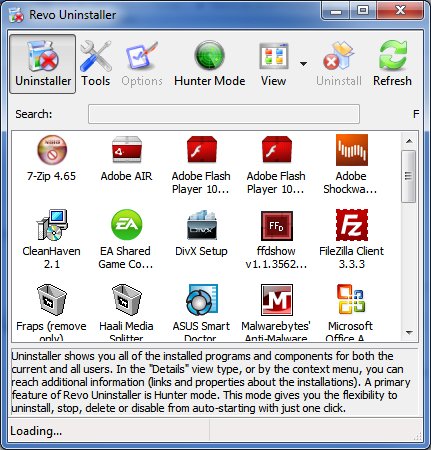The easiest way to restore your Windows PC to its original defaults is to use the included recovery program to reinstall or restore Windows. This works well in many cases, and you can use this method to erase your computer and start fresh completely.
But what if you don’t want to wipe your computer clean? If that’s the case, you’ll need to use a few specific utilities if you’re going to clean up your computer to bring it back to its near new state. This method isn’t always faster than reinstalling Windows, but it’s usually preferable if you don’t want to worry about losing files or having a handy Windows installation disc. Let’s take a look at what you need to get the job done.
Use Windows Backup and Restore
Recent versions of Windows, including Windows Vista and 7, include Backup and Restore in the control panel. This feature allows you to restore your computer to a previous state using the Open System Restore option, which starts a simple process that nearly undoes your computer back to an earlier state.
This is easy, but there’s one key issue – you need a restore point to restore! It is not uncommon for a computer to ship with one already configured, but if you or the manufacturer did not do this, you would have to use the steps below.
Remove unwanted programs

The gradual accumulation of software on your computer often leads to reduced performance, and uninstalling programs that didn’t come with your computer usually improves performance – or at least free up some space. Hard Drive. Start with uninstalling recommended unwanted programs.
Most programs can be uninstalled using the Programs and Features tool in the Windows control panel, but some may be stubborn and refuse to uninstall correctly. Using Revo Uninstaller, or a similar program, I suggest removing programs that are difficult to remove.
Clean up the Windows Registry
Once you uninstall a program, it’s gone. That’s not always the case. Windows consists of a database called the registry that includes information about installed programs, and while uninstalling a program is in theory meant to remove the program’s registry entries. That doesn’t always happen. A bloated registry can sometimes degrade performance, so it’s a good idea to try and make it look new.
There are plenty of registry cleaning tools out there, but Wise Registry Cleaner is our top recommendation. Regardless of the device you use, be sure to make a Windows backup (remember Backup and Restore) because there’s always a minimal risk of damaging the registry, possibly crippling your computer.
Turn off the Startup program
Even after uninstalling unwanted programs, you may still experience some problems with slow boot times if you have too many programs trying to run when your computer boots up.
To disable some programs, go to the Windows Search bar and type ” msconfig “. Navigate to the Startup tab and review the programs listed. These are the programs that load when you start your computer. You can disable specific programs by unchecking their checkbox and then clicking OK.
If you find that you’ve disabled a beneficial program, you can always go back to msconfig and re-enable the program.
Restore Windows Defaults
Over time, you can change some of the important Windows features. It’s hard to include every single feature in Windows that can be restored to default settings, but here are some changes and an easy restore. Note that the instructions below are for Windows 7 computers.
Restore Browser Defaults
If you are using Internet Explorer, you can use the Internet Options menu in the Windows Control Panel Windows. There are default buttons in the Security, Privacy, Programs, and Advanced tabs. Google Chrome and Firefox have similar buttons in their Preferences menu.
Restore the Defaults Firewall
The Windows Firewall Options can be found in the Windows Control Panel. There is a Restore Firewall Defaults option on the options menu on the left. Note that you might not want to restore this default setting if you have made specific changes to the firewall rules.
Folder
The Folders Options window can be accessed from the Windows Control Panel. The Restore Defaults option is located in the lower right corner.
Libraries
Right-click the Libraries icon and then click Restore Default Libraries. You can find Libraries in the left pane of Windows Explorer.
Restore your Media Player
Most media players have an option that will allow you to dismount your current media library and rebuild it from scratch. This is not a bad idea if your media files become a mess.
Start menu
The Start Menu can be reverted to the default settings by right-clicking Start, going to the Properties window, and then clicking the Customize button. Use Default Settings button will appear at the bottom of the Customize Start Menu window.
Taskbar
Right-click the Taskbar, then click Properties. Strangely, there’s no default button. The default settings are as follows; All options in Taskbar Appearance are unchecked, Taskbar position is placed at the bottom, Taskbar buttons set to Always Combined, hide labels.
Get rid of old devices and printers
The Devices and Printers section of the Windows Control Panel is the place to go if you need to remove peripherals you no longer use. This usually doesn’t impact performance but has other benefits – disassembling some older printers can make printing more intuitive.
Conclusion
Following these steps should restore your computer to an almost new state. This is not as complete as reinstalling Windows, and the process is not recommended if you are trying to fix your computer after a malware attack. If you are trying to speed up your computer, reduce clutter, or wipe it clean for new users, the steps above should prove enough.





